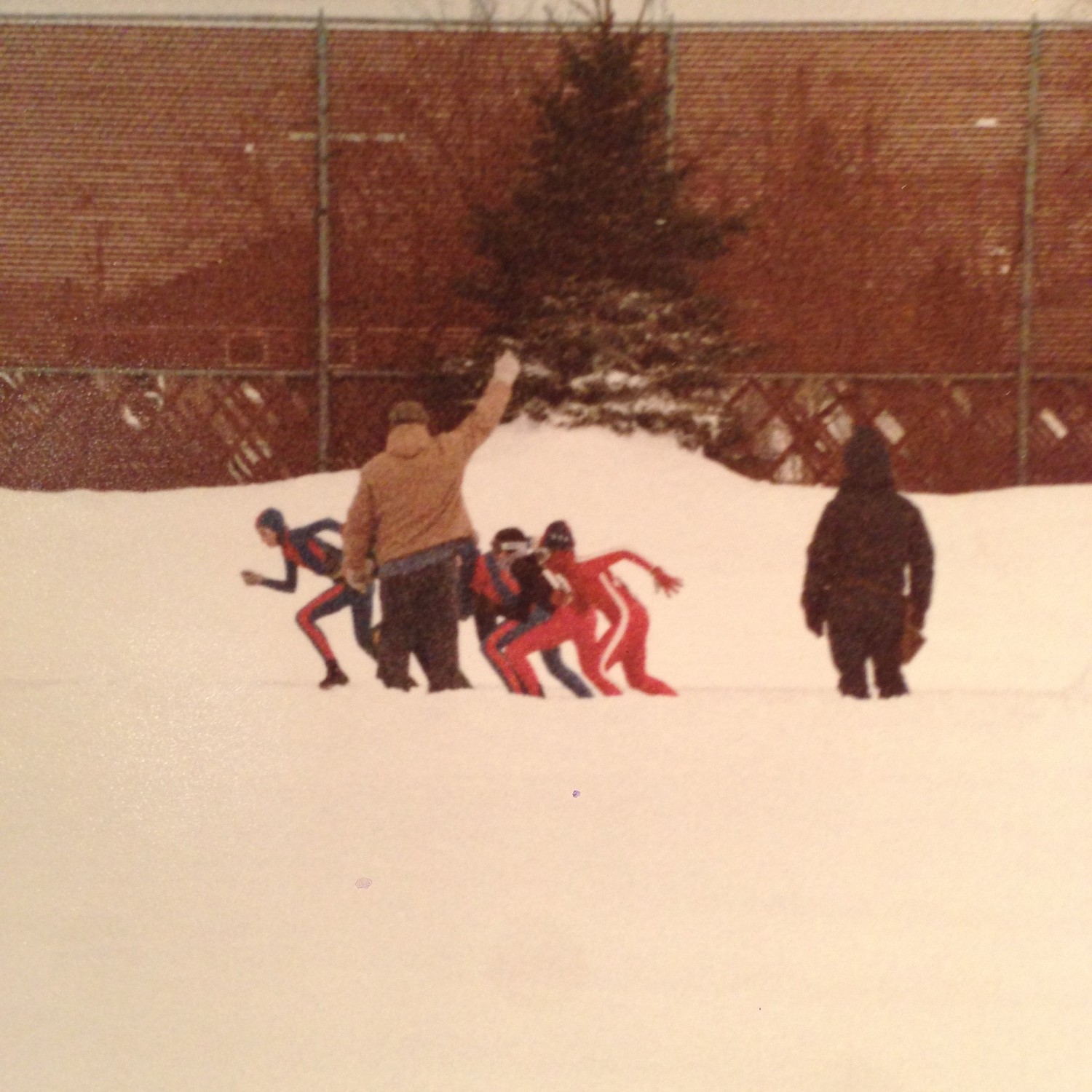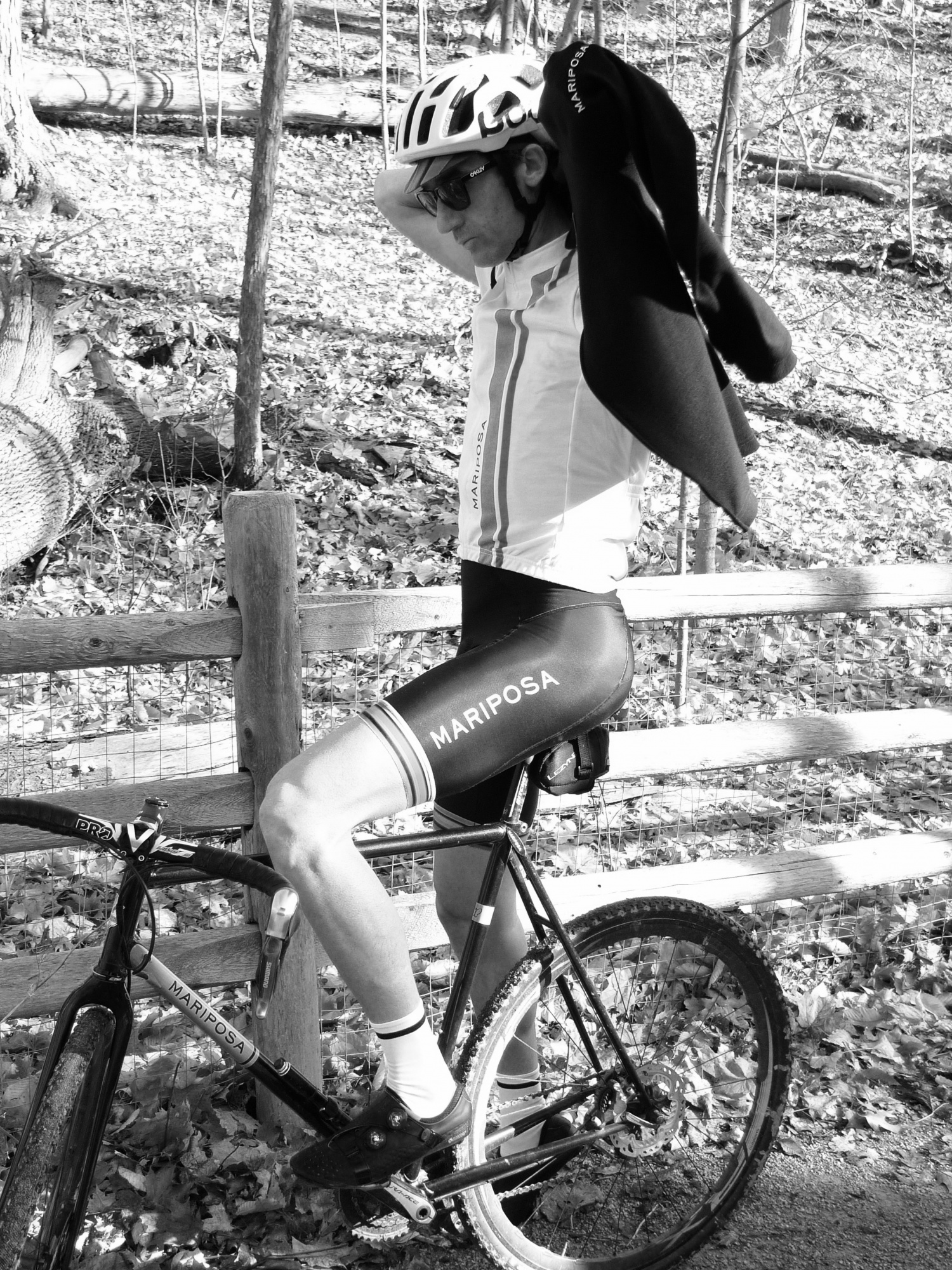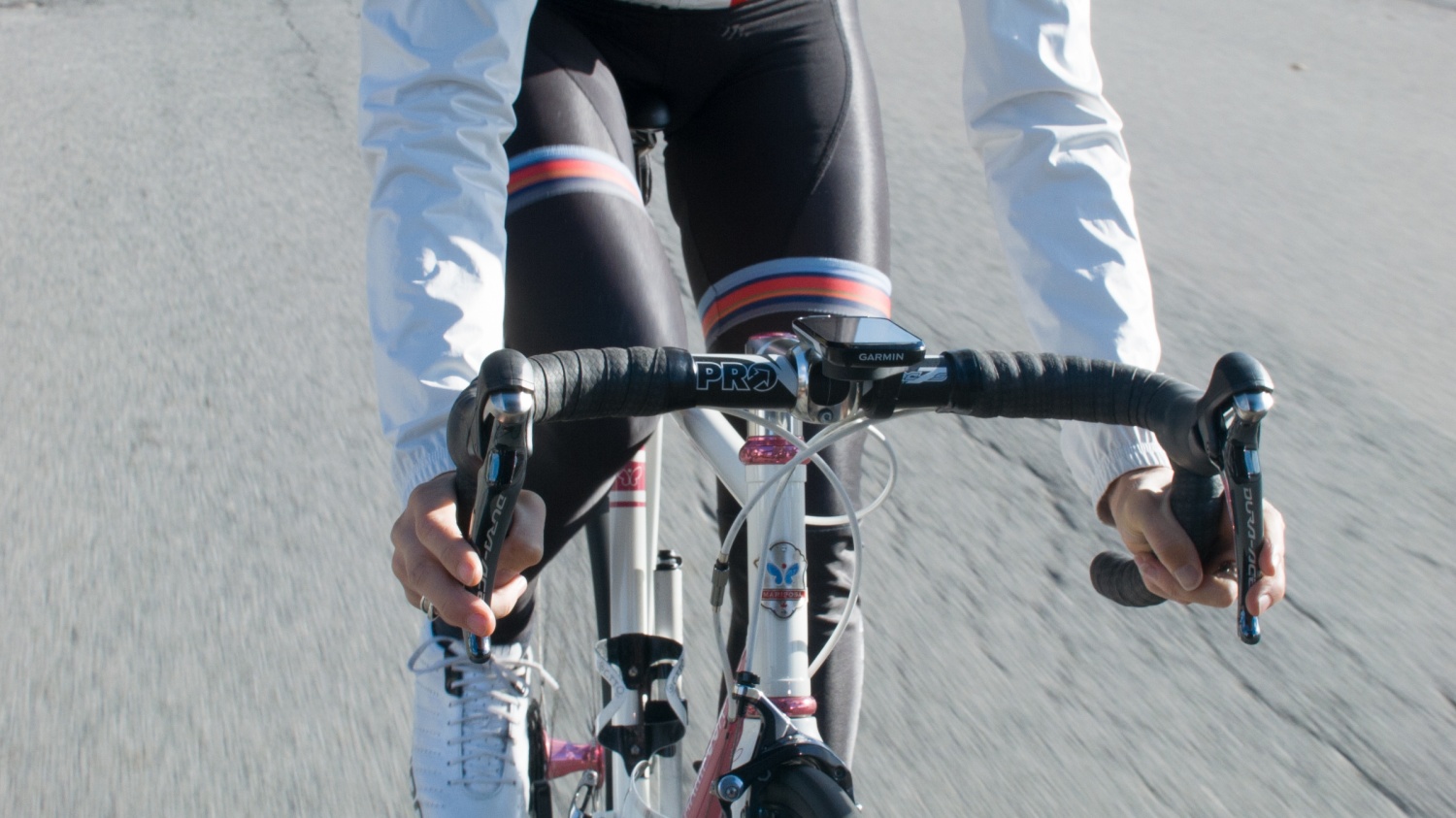By Dede Barry | Photography by Walter Lai & Adam Madrzyk
As a child, I skated laps with my friends on the Olympic speedskating oval in Miwaukee, Wisconsin. In the 1980s, the rink was not enclosed but open to the howling, biting wind that blew off Lake Michigan. Even with our faces coated in Vaseline the cold stung and within minutes, our noses felt like they were beginning to freeze. Of course, exposed skin is at risk of frostbite, but that never kept us off the ice. To keep looping around the oval into the cold winter evenings, we learned how to deal with the conditions. The love of gliding down the ice at high speed, and dressing in the right clothing in the warming house, was what got us out, day after day through the long dark winter days.
To train for skating in the summer months, we began riding our bikes to keep in shape. Cycling grew on me quickly and I soon started riding year round. I was selected to the National Cycling Team and then a professional team. Due to my speed skating experience, I was able to perform better in cold, wet conditions than many of my competitors and teammates who grew up in warmer climates because I had learned to dress appropriately for the weather.
The wind is the greatest factor on the ice and on the bike. When I suited up in the ice rink warming house, I paid close attention to the ‘wind chill factor’ which influenced how I would dress, as a brisk wind felt much colder when whirling around the rink. But, when I began cycling, windchill factor took on a whole new meaning, as on a bike speeds are higher and the cyclist’s toes and fingers move less.
Feet and hands are often the first parts of the body to feel the cold. The body’s extremities get less blood flow, as they move little when cycling and are more exposed to the wind. Toes are most affected by the cold as they are moving through the cold air faster than any other part of the body.
A thin pair of high (above the ankle) wool socks, shoes with no vents or vents covered (there are many ways to cover shoe vents: duck tape is cheap and works well, even plastic baggies to cover the toes can work well inside your shoe). On the outside of your shoes, thin, but wind and waterproof booties will keep your feet warm and dry without restricting mobility.
Keeping your hands warm is never easy. If there is any moisture, waterproof shells will keep your hands dry. Often a thin shell with a merino wool liner will keep your hands protected from both moisture and cold, but in extreme cold, mitts, that keep your fingers touching are better for warmth. Glove fit is important as well, they need to cover your wrists as there should be no gap between your gloves and your jacket or jersey. Also, fingers will get cold more quickly if the gloves are too tight or short.
Legs move constantly on the bike and do the bulk of the work, therefore a balance between warmth, breathability, wind protection and freedom of movement must be achieved in kit choice. Heavy tights over cycling shorts are bulky, restrict movement and often cause too much moisture build up in the crotch area. In above freezing conditions, fleece lined bib shorts with fleece lined leg warmers will keep you warm and provide maximum movement, as well as the option to remove leg warmers if conditions improve while on the road.
When dressing for the cold, too many people make the mistake of wearing bulky jackets, gloves and booties, which compromise mobility, get heavy with moisture and reduce aerodynamics. Layering not only allows you to shed clothing as you warm up, but also gives the ability to capture heat and disperse moisture.
Layering is most critical on your core and arms. Several thin layers will provide wind protection, moisture wicking and will be relatively lightweight. Merino wool base layers, or undershirts, offer moisture wicking, breathability and tend to not pick up body odors like some of the other base layer materials. Over my undershirt, I usually wear a short sleeve jersey and arm warmers or a long sleeve jersey. On colder days, I’ll pull on a vest over top of the jersey. Thin thermal jackets are excellent for below zero Celsius temperatures. A thin water repellant rain / wind jacket and vest are critical to wear or have stowed away in your jersey pocket as a back up on nasty days. When it is cold and/or if there is threat of rain or snow, never leave home without it!
Lastly, the head and neck is often where the most heat is lost. The new aero helmets are often overlooked when considering winter gear. Because aero helmets do not have vents, they provide added warmth in the cold weather. A cotton cap under your helmet will help achieve this as well. In extreme cold, it’s important to cover your ears. This can be done with a thermal cycling cap. Unlike hats without peaks, cycling caps will also keep the rain, snow and sun out of your eyes. When rain is pelting down, glasses will often fog up or become so dirty that visibility is affected. A simple cap with a peak will keep the spray from others’ wheels and the rain from the sky out of your eyes–which is why you’ll often see the professionals wearing peaked caps in early season Classics when the weather is foul. Neck gators can also be useful for keeping in the body heat and, if they are long enough, they can be stretched up over your head to provide additional warmth.
The golden rule is to never underdress. Layered clothing can always be pealed away and loaded in pockets (or if touring, bags) while if you don’t have enough clothing the ride will be miserable.
Dressed for the conditions winter riding can be a fun adventure.





